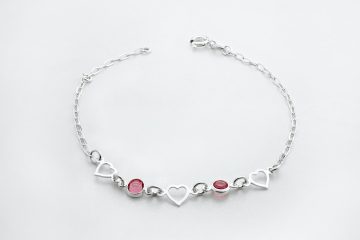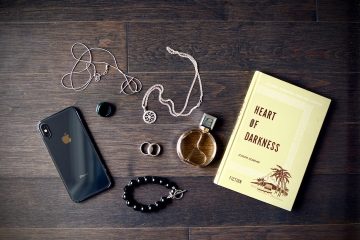Bracelets are a popular accessory that can add a touch of style and elegance to any outfit. Whether you’re looking to buy a bracelet for yourself or as a gift for someone else, it’s important to understand the standard measurement for bracelet size. This knowledge will ensure that the bracelet fits comfortably on the wearer’s wrist and is neither too tight nor too loose. In this article, we will explore the average length of bracelets in centimeters, providing you with the necessary information to make an informed decision.
What is the standard measurement for bracelet size?
When it comes to measuring bracelet size, the standard unit of measurement used is centimeters. This is because centimeters provide a precise and universal way to determine the length of the bracelet. The length of a bracelet is typically measured from end to end, including the clasp. It’s important to note that bracelet sizes can vary depending on the style and design of the bracelet.
Understanding the average length of bracelets
1. The average bracelet length for women
:
Women’s bracelet sizes generally range from 17 to 20 centimeters. The average length is often around 18 centimeters. However, it’s essential to consider personal preferences and the desired fit. Some women prefer a tighter fit, while others prefer a looser one. Keep in mind that bracelets with larger beads or charms may require a slightly longer length to accommodate them.
2. The average bracelet length for men
:
Men’s bracelet sizes tend to be slightly larger than those for women. The average length for men’s bracelets is typically between 19 and 22 centimeters. However, just like women, men may have different preferences regarding the fit of their bracelets. It’s crucial to consider the size of the wearer’s wrist and their desired fit when choosing a bracelet.
3. Children’s bracelet sizes
:
Children’s bracelet sizes vary depending on the child’s age. For infants and toddlers, bracelet sizes are generally around 12 to 14 centimeters. As children grow older, their wrist size increases, and bracelet sizes range from 14 to 16 centimeters for young children and 16 to 18 centimeters for older children. It’s always a good idea to measure the child’s wrist to ensure a proper fit.
4. Adjustable bracelets
:
Some bracelets come with adjustable features, such as extenders or sliding clasps, allowing for a flexible fit. These bracelets are designed to accommodate a range of wrist sizes and can be adjusted to fit comfortably. Adjustable bracelets are a great option if you’re unsure about the recipient’s exact wrist size or if you want a bracelet that can be worn by multiple people.
Factors to consider when choosing a bracelet size
1. Wrist size
:
The most crucial factor to consider when choosing a bracelet size is the wearer’s wrist size. To measure the wrist accurately, use a flexible measuring tape or a piece of string, wrap it around the wrist just above the wrist bone, and mark the point where it overlaps. Then, measure the marked length using a ruler.
2. Comfort and fit
:
It’s important to ensure that the bracelet fits comfortably on the wearer’s wrist. A bracelet that is too tight can be uncomfortable and restrict blood circulation, while a bracelet that is too loose may slip off or feel cumbersome. Strive for a fit that allows the bracelet to move slightly on the wrist without being too loose.
3. Style and design
:
Different bracelet styles and designs may require specific lengths to look their best and maintain their intended aesthetic. For example, a bracelet with larger beads or charms may need extra length to accommodate them. Consider the overall design of the bracelet and how it will sit on the wrist when choosing the size.
4. Personal preferences
:
Ultimately, personal preferences play a significant role in choosing the right bracelet size. Some individuals prefer a snug fit, while others prefer a looser fit. Additionally, the occasion and intended use of the bracelet may also influence the desired fit. It’s essential to take into account the wearer’s preferences to ensure they are comfortable and happy with the bracelet.
Conclusion
Understanding the standard measurement for bracelet size is crucial when purchasing a bracelet. By knowing the average lengths for women, men, and children, as well as considering other factors like wrist size, comfort, style, and personal preferences, you can choose a bracelet that fits perfectly and accentuates the wearer’s style. Remember, a well-fitted bracelet not only looks great but also provides comfort and enhances the overall wearing experience.
FAQs (Frequently Asked Questions)
Q1: Are there any other measurement units used for bracelet sizes?
A1: While centimeters are the standard unit of measurement for bracelet sizes, some countries may use inches or millimeters. It’s always important to check the measurement unit used when purchasing bracelets from different regions.
Q2: Can I resize a bracelet if it doesn’t fit properly?
A2: It depends on the design and structure of the bracelet. Some bracelets can be resized by adding or removing links, while others may not be adjustable. If you have a bracelet that doesn’t fit properly, consult a professional jeweler to see if resizing is possible.
Q3: Can I use a bracelet size chart to determine the right size?
A3: Bracelet size charts can be a helpful tool, but it’s important to remember that they provide general guidelines. It’s always best to measure the wearer’s wrist to ensure an accurate fit, especially if the bracelet is a gift.
Q4: What if I’m buying a bracelet online and can’t measure the wrist?
A4: When buying a bracelet online, it’s essential to check the seller’s sizing guide and product descriptions. Look for information on the bracelet’s length and any adjustable features it may have. If in doubt, reach out to the seller for assistance.
Q5: Are there any standard bracelet sizes for specific types of bracelets?
A5: While there are average lengths for women, men, and children’s bracelets, specific types of bracelets, such as bangles or cuff bracelets, may have their own standard sizes. It’s recommended to check the sizing information provided by the manufacturer or seller for these specific styles.




